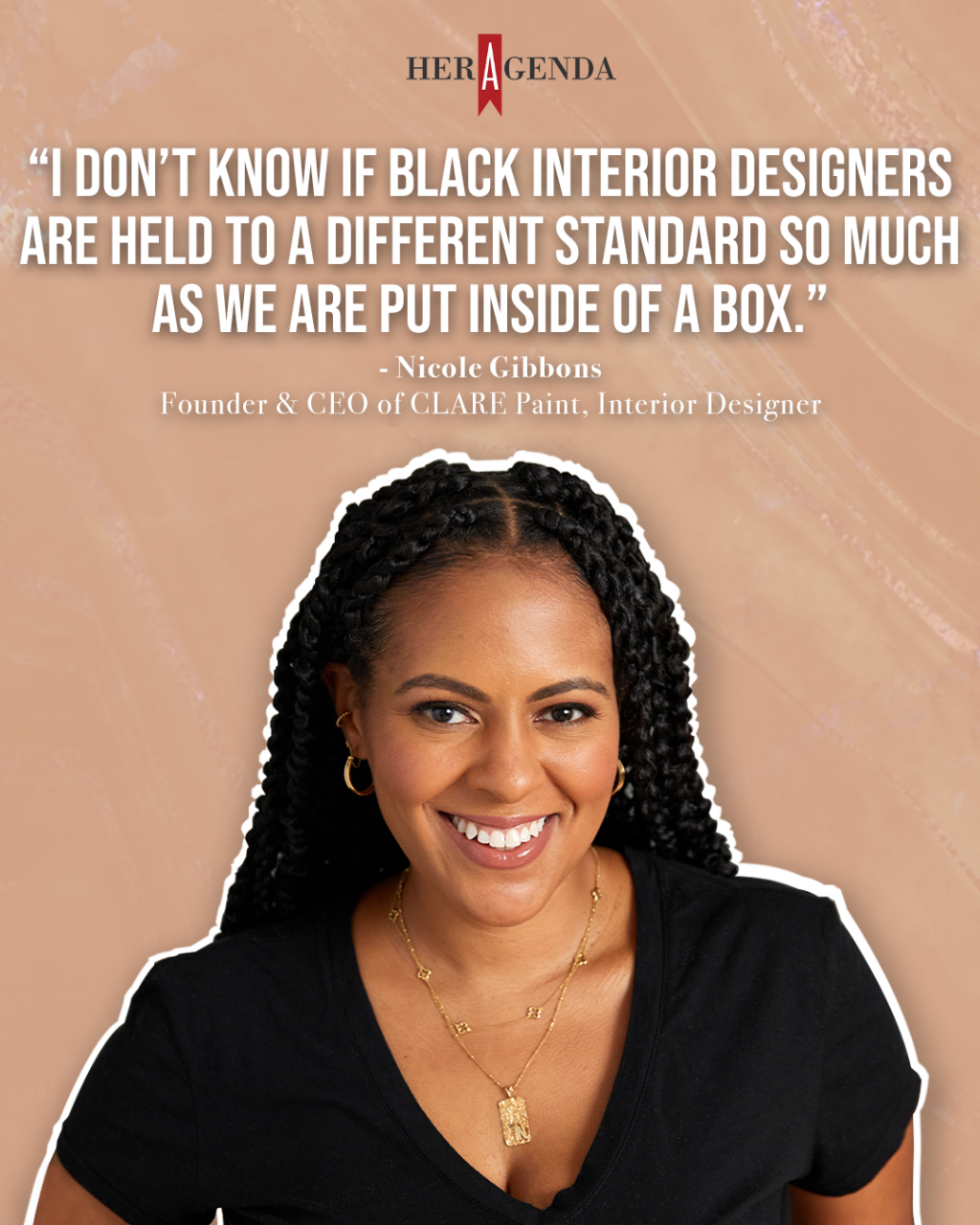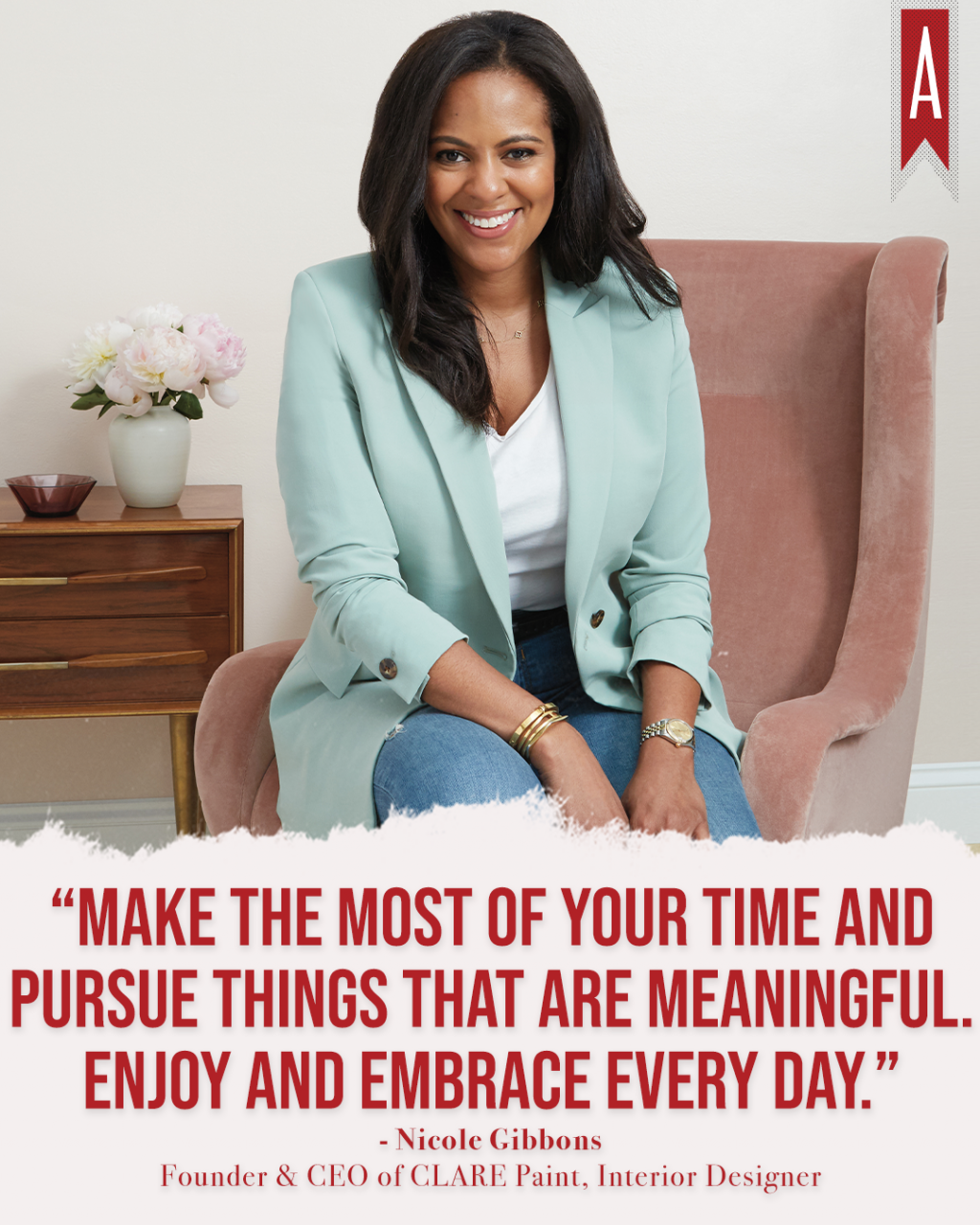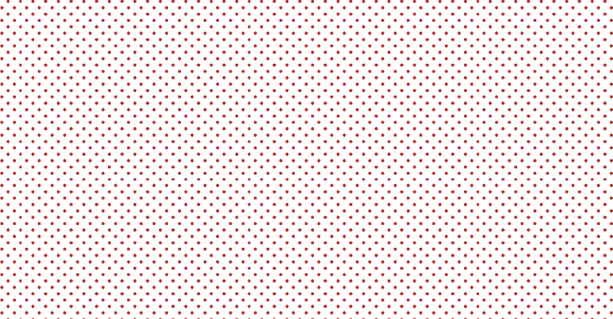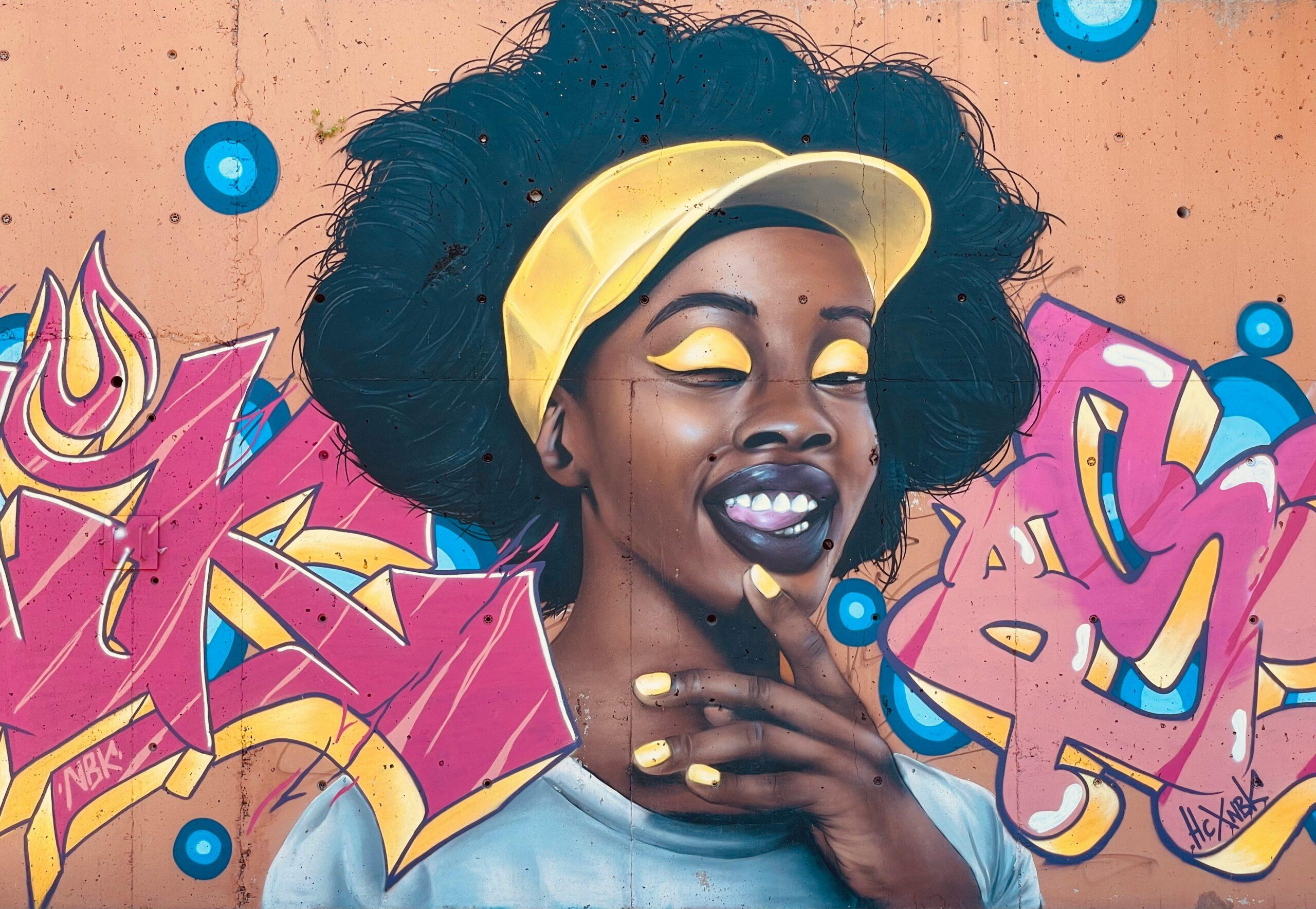Nicole Gibbons, the founder & CEO of paint start-up, Clare, has been making waves in the design industry since she started her decor blog in 2008. While working what many would call a dream job after a decade-long career in fashion PR, Nicole decided to redesign what her life looked like and pursued her long-lost passion.
Growing up as the daughter of a decorator and a child of the MTV generation, Nicole always had a passion for design but did not initially follow it. After working on her blog as a side hustle for years, she strategically transitioned into being a full-time entrepreneur in 2013. With adequate savings and years of research under her belt, Nicole became a self-taught designer and eventual design expert on OWN’s Home Made Simple series, and featured on HGTV, TLC, Martha Stewart Living, and more.
Although a little over 72% of interior designers are women, the amount of Black designers falls under 2%. Nicole Gibbons is among that 2%. And even after breaking through in that space, she did not stop there. After hearing countless paint shop horror stories, Nicole decided to enter the male-dominated paint industry in 2018 with the intention of not only making paint shopping fun but easier than ever. For example, you can even take a color assessment test to help with narrowing down your color options. Relying on her PR background and years of television auditions to creatively pitch her brand, Nicole achieved a major milestone of raising over $2 million in venture capital, in just two months.
Her Agenda recently spoke with Nicole on her career transition, incorporating balance into her schedule, and decorating hacks.
Her Agenda: I was watching a speaking engagement you did and you discussed how you worked in PR for a decade and started an interior design side hustle, then in 2013, you decided to pursue it full-time. What was taking that huge leap and making that career change like?
Nicole Gibbons: You know, it’s funny, it wasn’t an overnight thing. While I was working in PR, I started a lifestyle blog in 2008 and didn’t leave [the PR industry] until 2013. I was doing my blog and my side hustle design stuff for five years. So, this was more of a process than a transition. I worked really hard building my confidence, learning the craft, and rode out the recession since I wasn’t willing to leave my day job during that time. It was a slower, more thoughtful, and strategic process. By the time 2013 rolled around, I was just ready. I was really prepared and saved up money in case it took a while to take things off the ground. Even though I had that job, I was preparing to venture out on my own for years.

Her Agenda: I was doing research on interior designers and saw that less than 2% of interior designers are Black. With that being said, do you feel like your work is held to a different standard?
Nicole Gibbons: I actually didn’t know that statistic. I know that there’s not a ton of Black designers, especially Black designers who are recognized. I don’t know if we are held to a different standard so much as we are put inside of a box. We are either put into a box or overlooked. We are put into a box as a Black designer, not an interior designer. We are used to check a diversity box or fill a void. We are also overlooked in the sense of people only publicizing folks who are in their circle, who look like them and reflect the way they live. People who are in editorial positions and in positions to give exposure to the work of interior designers aren’t very diverse, and so, the results of that are an insular world that is hard to break into if you’re not from that circle. There is a lack of awareness of Black designers who are hustling, talented, and creating beautiful work. And, they are not being seen in the same way as other types of people. I know the industry is working to be better, but there is slow progress being made.
Her Agenda: You are the founder and CEO of Clare, which has dozens of unique color swatches. How do you translate an idea or a visual that you have into a color? For example, when you go to the beach or museum, and gain inspiration for a color, how do you translate that into an actual product?
Nicole Gibbons: Maybe I’ll find an actual standard of something that reflects a color that I have in my mind. It can be the ocean, a photo, a fabric, a page in a magazine, or a label on a product. You can take that standard and the color can be measured and replicated. It’s all about taking that inspiration and translating it into something physical that looks like what I want it to achieve. And, then using that to formulate a color around. Usually, for every color, there are 5 or 6 that are similar but I chose the one that best reflected whatever that mood, feeling, or color was in my mind.

Her Agenda: Nowadays, more and more people are moving into the minimalist aesthetic and everything is kept to a white, cream, or grey aesthetic. But, I want to get your opinion on how powerful color is when decorating?
Nicole Gibbons: I think that we tend to see trends, which are isolating. When you say that white is a trend, maybe it’s just the people who are popular on Instagram have that aesthetic. What I’ve seen is that people live very differently in different parts of the country. When you think about the average American, they aren’t minimalists, they are more traditional. My point of view is that you should live in a space that creates a mood and a feeling that is representative of how you want to feel. So, if you want your space to feel calm, maybe that means shades of blue and calm colors. If you want your space to feel energetic, maybe you have vibrant colors. As a designer, I’ve always embraced color and personally think that color is so much more interesting than all-white or neutral. It is more powerful and impactful. You can paint a room gray and it can look just fine, but if you paint a room a really amazing shade of blue or green, it can offer a rich depth that white could never offer. I also encourage people to be a little bit more fearless and adventurous when choosing colors because the impact is going to be greater.
Her Agenda: I know that you are just an all-around hustler, but how do you incorporate balance into your routine?
Nicole Gibbons: I don’t know if I incorporate balance. I mean I try but it is so hard when you are running a small company and trying to do so many things. There are never enough hours in a day or days of a week to get it all done. There are constant feelings of being overwhelmed. For me, I’m actively working on it but there’s a couple of keys to finding more balance like surrounding yourself with great people who can give you leverage and free up your time. Recently, someone who I know instilled in me this idea of carving out one thing a week for myself that doesn’t have to do with work. I work from home now since COVID, and I’m on my laptop from morning to night, which is not great. It’s nice to take a break and caring for myself is the best part of my day. It can be as simple as taking a walk, going out to dinner for a very nice meal, or finding time to call loved ones. I might be “on” 24/7 for eleven months straight but I’ll find time to completely disconnect and come back recharged.

Her Agenda: I personally have a Pinterest board where I pin all of the ideas that I have for my apartment. And, I wanted to know if you are an avid Pinterest user, and if not, what online resources do you recommend for people to use to build their own spaces?
Nicole Gibbons: Oh yeah, Pinterest all day long. I’m a really heavy Pinterest user. When I was operating my design firm, I used to do collaborative boards with my clients. I create a mood board for everything. I just moved so I have boards that I’m curating for my place, and I use a lot of fashion and beauty inspiration. It’s a great resource and probably my favorite tool for finding and archiving inspiration.
Her Agenda: What is a motto that you live by?
Nicole Gibbons: Life is really short. The older you get, the more you realize how fleeting life may be. Make the most of your time and pursue things that are meaningful. Enjoy and embrace every day.
[Editor’s note: This interview has been edited for length and clarity.]








